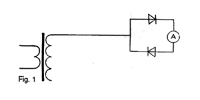Has anyone done the single wire transmission experiment? If you got it to work with one wire, and wish to replace the one wire with the earth itself, how much voltage is required for x amount of distance from 3 feet deep into ground in order to receive the power at high efficiency?
Thanks.
Thanks.

Comment